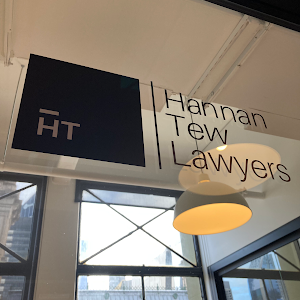
A Visitor (Subclass 600) visa allows individuals to travel to Australia temporarily as a tourist, to see family and friends, or to undertake “business visitor activity”. Generally, it has a 12-month validity period and allows an individual to stay for up to 3 months per entry.
Citizens of certain countries have access to “streamlined” versions of this visa, including the eVisitor and the Electronic Travel Authority (ETA). You can read more about these options here.
When making an application for a Visitor visa, a key aspect that the Department will consider in their assessment of an application, is whether an applicant genuinely intends to stay temporarily in Australia for the purpose for which the visa is granted, having regard to:
- whether the applicant has complied substantially with the conditions to which the last substantive (or bridging) visa held by the applicant was subject;
- whether the applicant intends to comply with the conditions that the Subclass 600 visa would be subject; and
- any other relevant matter.
This is known as the Genuine Temporary Entrant (GTE) criterion.
What is considered in a GTE assessment?
In the assessment of whether an applicant satisfies the GTE criterion, a case officer for the Department will consider several factors. Importantly, no one factor outweighs another, and a decision maker will consider and balance the entirety of your circumstances.
A non-exhaustive list of the factors considered for the GTE assessment, as well as ways that an applicant can demonstrate that they meet these factors, are outlined below:
Factor |
Explanation |
Examples of supporting evidence |
|
Employment and financial circumstances |
The decision maker will consider whether the person has steady employment, and sufficient finances to cover their proposed period of stay. |
Evidence of employment/finances, such as:
|
|
Circumstances in home country |
The decision maker will consider the current social, political, and economic circumstances in the applicant’s home country, and whether as a result there would be a strong incentive for them not to return. For example, they may consider any social unrest, conflict, employment opportunities, and salary rates, and living conditions. |
Evidence of personal reasons why an applicant would want to return to their home country, such as:
|
|
Personal ties to Australia |
The decision maker will also consider any potential personal ties in Australia, and whether they outweigh an applicant’s ties to their home country. |
Evidence of the above mentioned personal ties to an applicant’s home country. |
|
Offer of support provided by family/friends in Australia |
The Department will consider whether there are genuine offers of support which may substantiate reasons for travel |
Letters of support from family or friends attesting to the level of support offered. |
|
Immigration history |
The decision maker will consider an applicant’s past immigration history in Australia and in other international countries, particularly compliant travel to “developed” countries such as New Zealand, US, UK, and European countries. |
Evidence can be provided in the form of visa grant letters/labels, and/or a statement outlining any previous visa grants and compliance with previous visa conditions. The statement should also include an explanation for any non-compliance of past visa conditions, or past refusals or cancellations. |
|
Purpose of visit |
The decision maker will consider the reason an applicant has applied for a visitor visa, the proposed duration of stay, and whether their intentions in Australia align with this reason. They will consider whether there is reason to believe they would be undertaking other activities which do not align, such as studying or working. They will also consider whether there are any compelling/compassionate reasons to travel |
Evidence of plans in Australia, which align with the purpose of an applicant’s visit, such as:
|
|
Credibility |
Whether the applicant has provided accurate and consistent information |
This is ensuring that the visa application is as accurate as possible, and forthcoming about the travel to Australia. |
|
Australian visa applications |
The decision maker will consider whether the applicant already holds a visa, intends to lodge another visa, or has already lodged an application for another visa |
A statement explaining current visa held (if transitioning to Visitor visa), or any lodged/potential visa applications – and why the Visitor visa application is only for a temporary stay. |
|
Total length of time already spent in Australia |
The decision maker will consider how much time an applicant has already spent in Australia, and whether they genuinely intend to stay temporarily. |
A statement explaining any recent periods of temporary stay in Australia, and why the current proposed period of stay is genuine and temporary. |
A well-prepared application should address as much of the above as possible, noting that certain applicants will be subject to higher “risk factors” than others, and therefore may need more elaboration or documentary evidence.
Conclusion
Understanding the GTE requirement is a significant component of the Australian Visitor visa application process, which can make or break an application. There are numerous factors involved as outlined above, and what may seem like a “straight forward” application can be derailed by wording something incorrectly, not providing sufficient information and explanation for the purpose of travel, or not providing sufficient documentary evidence of certain claims made.
At Hannan Tew Lawyers we have assisted numerous clients address the GTE in their visitor visa applications, including where individuals have complex circumstances such as prior Visitor visa refusals (or visa refusals to other countries), unusual employment arrangements, and/or family members in Australia.
If you need legal assistance or have an immigration related query, get in touch with our experienced team. Contact us by email at [email protected] or by phone at +61 3 9016 0484.

